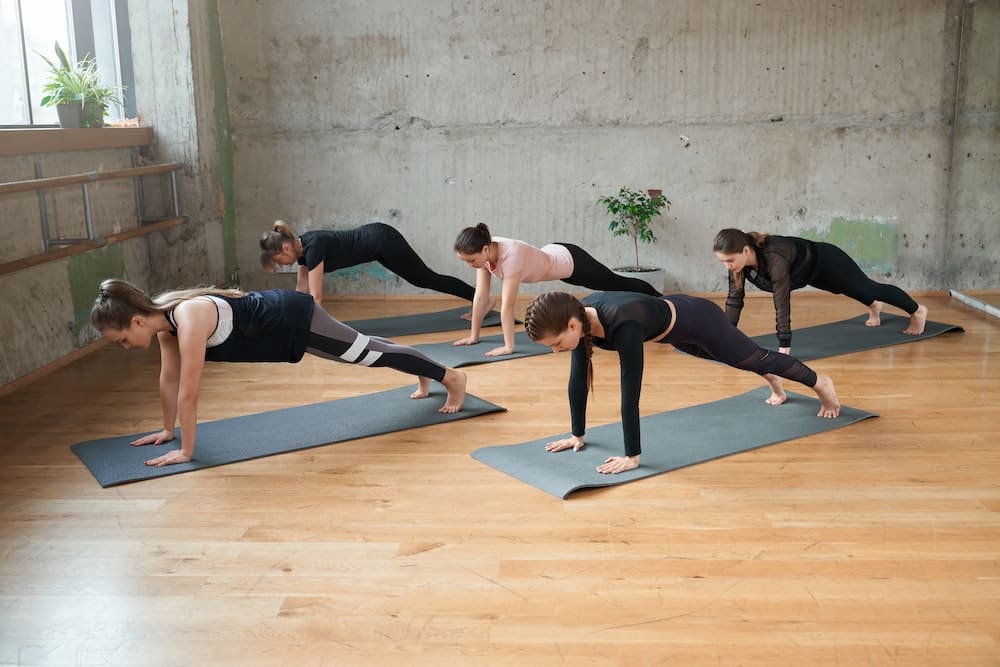What Are the Best Exercise Modifications for Pregnant Women with Back Pain?

Pregnancy is a time of profound physical and emotional transformation. With your body preparing to bring new life into the world, it’s normal to experience some discomfort and pain. For some pregnant women, this can include lower back pain. While it may be tempting to rest and avoid physical activity, research shows that exercising during pregnancy can actually help alleviate back pain and improve overall wellness. However, not all exercises are safe or beneficial during this stage of life. That’s why it’s crucial to know and understand the best exercise modifications for pregnant women with back pain.
Safe Exercise Considerations During Pregnancy
Before diving into the specific exercises and modifications, it’s essential to highlight some key considerations when it comes to exercising during pregnancy.
In parallel : How Can Interactive Health Education Games Improve Chronic Disease Knowledge in Children?
First, always consult with your healthcare provider before starting or changing your exercise routine during pregnancy, especially when dealing with back pain. Your body undergoes significant changes during this time, which can affect your ability to perform certain exercises safely. What was once easy might now be challenging, or what was safe could potentially be harmful.
Second, listen to your body. While a mild level of discomfort is usual when exercising, severe or persistent pain is not. If a particular exercise causes discomfort or exacerbates your back pain, it’s best to avoid it.
Also read : How Can Avatar-Based Virtual Reality Therapy Support Physical Rehabilitation Goals?
Lastly, maintain a balance in your exercise regimen. A combination of cardio, strength training, and flexibility exercises can contribute to a healthier pregnancy and easier childbirth.
Pelvic Floor and Core Exercises
The pelvic floor and core muscles play a crucial role during pregnancy and childbirth. Strengthening these muscles can help reduce back pain and make labor and delivery more manageable.
One safe and effective exercise is the pelvic tilt. To perform this exercise, start by lying on your back with your knees bent and your feet flat on the floor. Flatten your lower back against the floor by tightening your abdominal muscles and tilting your pelvis upward. Hold this position for several seconds, then relax. Repeat this 10 times.
Another beneficial exercise is the standing pelvic tilt. Stand with your back against a wall, with your feet shoulder-width apart. Flatten your lower back against the wall by tightening your abdominal muscles and tilting your pelices upward. Keep your upper body relaxed. Hold this position for several seconds, then relax. Repeat this exercise 10 times.
Stretching Exercises
Stretching exercises are excellent for relieving back pain and improving your body’s flexibility during pregnancy.
A safe and effective stretch is the cat-cow stretch. Begin in a hands-and-knees position, with your hands under your shoulders and your knees under your hips. Slowly arch your back upward like a cat, tucking your tailbone under and letting your head drop. Hold this position for a few seconds, then slowly drop your belly down, lifting your head and tailbone up like a cow. Repeat this 10 times.
Another beneficial stretch is the child’s pose. Begin on your hands and knees, then slowly sit back onto your heels, stretching your arms out in front of you and lowering your torso onto your thighs. Hold this position for several seconds, then slowly return to the starting position. Repeat this 10 times.
Leg and Back Strengthening Exercises
Strengthening the muscles in your legs and back can help support your growing belly and alleviate back pain.
One safe and effective exercise is the wall squat. Stand with your back against a wall, with your feet shoulder-width apart. Slowly slide down the wall until your thighs are parallel to the floor, keeping your knees directly over your ankles. Hold this position for several seconds, then slowly slide back up the wall. Repeat this 10 times.
Another beneficial exercise is the bird dog. Begin in a hands-and-knees position, with your hands under your shoulders and your knees under your hips. Keeping your back straight and your core tight, slowly lift one arm and the opposite leg until they are in line with your body. Hold this position for a few seconds, then slowly return to the starting position. Repeat this with the other arm and leg.
Moderated Aerobic Activities
Moderate aerobic activity can help maintain cardiovascular health, manage weight gain, and improve overall mood and energy levels during pregnancy.
Walking is an excellent, low-impact exercise that can be modified to your comfort and fitness level. Walking helps strengthen the muscles in your legs, hips, and lower back, which can relieve back pain.
Swimming and water aerobics are also beneficial aerobic activities for pregnant women with back pain. The buoyancy of the water supports your weight, reducing stress on your joints and back, and the resistance of the water helps strengthen your muscles.
Remember, it’s essential to keep your body hydrated and avoid overheating during aerobic activities. Always listen to your body and modify the intensity of your workout as needed to remain comfortable and safe.
Prenatal Yoga and Pilates
Prenatal yoga and Pilates are excellent ways to strengthen your pelvic floor, relieve back pain, and improve overall body strength and flexibility. They are considered safe exercises during the second trimester and third trimester of pregnancy.
Prenatal yoga emphasizes on slow movements and deep breathing which can help manage the physical demands of pregnancy, labor, and motherhood. It can not only improve sleep and reduce stress and anxiety, but also increase the strength, flexibility and endurance of muscles needed for childbirth. One yoga pose that’s especially beneficial for relieving lower back pain is the ‘pigeon pose’. In this pose, start by kneeling on all fours. Then, slide your right knee forward toward your right hand. Angle your right knee at two o’clock. Slide your left leg back as far as your hips will allow. Keep your hips square to the floor. If your hips are not square, there will be undue force on your back, and your back pain might worsen.
Pilates, on the other hand, focuses on core strength, stability, and body awareness which can be beneficial for pregnancy. An exercise like ‘pelvic curl’ can aid in strengthening abdominal muscles and the back. To perform this, lie on your back with knees bent and feet flat on the floor. Inhale to prepare. As you exhale, tilt your pelvis back so that your lower back presses against the floor. Then slowly lift your spine off the floor from the bottom, one vertebra at a time, tightening your glutes and hamstrings until you’ve lifted to about the base of your shoulder blades. Inhale at the top, then exhale as you articulate your spine back down to the mat, one vertebra at a time.
However, as with other forms of physical activity during pregnancy, it’s important to modify or skip certain moves if they make you uncomfortable.
Conclusion: Embrace Movement and Stay Active
Experiencing back pain during pregnancy can be challenging, but remember, it’s absolutely okay to slow down, modify your exercise pregnancy routines, or take a day off if your body needs it. Pregnancy exercises are not about maintaining the same intensity as before, but rather about adapting to the changes your body is undergoing and finding movements that feel good and help prepare your body for labor. Whether it’s pelvic tilts, yoga, Pilates, or a leisurely walk, maintaining regular physical activity can make a significant difference in managing back pain and improving your overall well-being during this special time.
As always, keep communication open with your doctor or midwife regarding your exercise regimen, and ensure that the activities you engage in are safe for both you and your baby. Also, while these exercises can help a lot, don’t ignore persistent pain. If your back pain continues or increases, it’s critical to seek medical advice as it could be indicative of a condition like diastasis recti or other issues that require medical attention.
Remember to always listen to your body’s signals and keep your well-being as the top priority. After all, every pregnancy is unique, and what works best for one woman might not work for another. So, find what works for you and embrace it. Enjoy this beautiful journey to motherhood.
